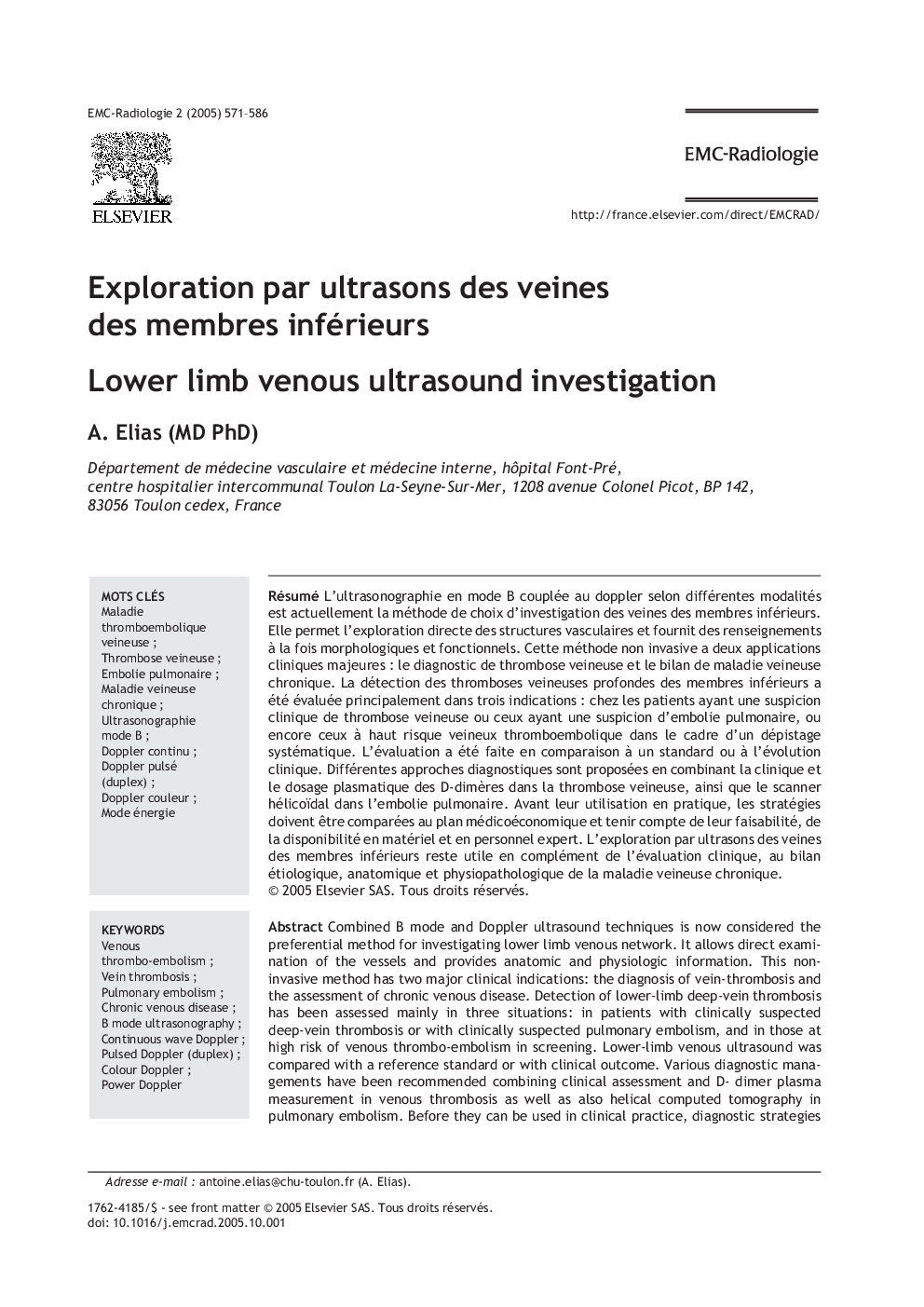| Article ID | Journal | Published Year | Pages | File Type |
|---|---|---|---|---|
| 9390054 | EMC - Radiologie | 2005 | 16 Pages |
Abstract
Combined B mode and Doppler ultrasound techniques is now considered the preferential method for investigating lower limb venous network. It allows direct examination of the vessels and provides anatomic and physiologic information. This non-invasive method has two major clinical indications: the diagnosis of vein-thrombosis and the assessment of chronic venous disease. Detection of lower-limb deep-vein thrombosis has been assessed mainly in three situations: in patients with clinically suspected deep-vein thrombosis or with clinically suspected pulmonary embolism, and in those at high risk of venous thrombo-embolism in screening. Lower-limb venous ultrasound was compared with a reference standard or with clinical outcome. Various diagnostic managements have been recommended combining clinical assessment and D- dimer plasma measurement in venous thrombosis as well as also helical computed tomography in pulmonary embolism. Before they can be used in clinical practice, diagnostic strategies need to be compared in term of cost-effectiveness. Feasibility as well as availability of equipment and expertise must also be taken into consideration. Lower-limb venous ultrasound remains also highly useful as a complementary tool to the clinical assessment for determining the aetiology, the anatomy and the pathophysiology of chronic venous disease.
Keywords
Related Topics
Health Sciences
Medicine and Dentistry
Radiology and Imaging
Authors
A. (MD PhD),
